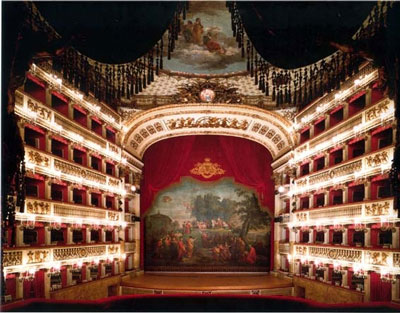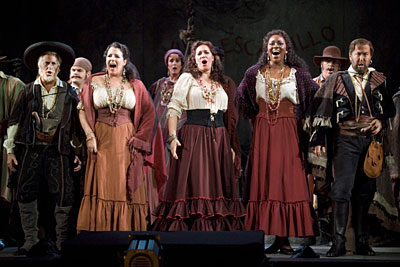
There’s been an interesting conversation going around lately about metaphors for blogging, and how we might explain blogging to someone who is not familiar with it. Char started it, and then Liz jumped on board, and then about a week ago, Dawud Miracle wrote about his blogging metaphor, a Conga line. And, since he’s always looking for people to dance with, he tagged some people, including me, to continue the conversation. I’ve been thinking a lot about this question since then. We tend to use examples that we’re familiar with, and since I was an opera singer before I was a blogger, I’ve been thinking about how best practices in blogging are similar to those in the opera world.
- Sing pretty. You don’t get anywhere in the opera world without a beautiful voice that is used correctly. Using your instrument poorly over the long haul will damage it and it’s difficult to fix once you get nodules on your vocal chords. In the same way, quality writing plays a vital role in a blog’s long term success. Good bloggers are always working on becoming better writers and more effective communicators.
- Tell an interesting story and don’t take too long or the audience will fall asleep. There are some operas that are great musically, but the story takes so long to play out (some of the Wagner operas that are 5 hours long for example) that some members of the audience fall asleep. So too, taking too long to tell our story in a blog post, without getting to the point, can cause the reader to move on to a more engaging blog.
- Wear appropriate costumes. I’ve worn kimonos, itchy wigs, corsets and ball gowns with trains so long that they’re constantly getting stepped on – whatever is appropriate for the time period the opera is set in. The costume enhances the production and draws the audience into the story. Most good bloggers add at least one picture to most of their posts. The right image will capture a readers attention and draw them into the content.
- Design great sets. I’ve sung on some giant stages, like Lyric Opera of Chicago for example, and you wouldn’t believe the detail and skill that goes into those amazing sets. I did a production of Samson and Delilah where the temple at the end fell down all around us, but was so well designed that it looked great from the audience and no one on stage was in danger of being hurt. The details, functionality and aesthetics of a blog design are extremely important. They give an immediate impression to visitor to a blog of the kind of quality they might or might not find in the posts.
- Don’t forget about the chorus. There is almost always a chorus in an opera production, and they always have comments to make about the main characters, playing an important role in the show. So too, the participation from those who comment plays an important role in a good blog. Without commenters, it’s just a solo performance, and while that can be interesting, the reaction from those reading makes a post even more interesting.
- Offer a translation. Most opera houses now have surtitles, which project above the stage and translate if the show is in a language other than English. Good blogs also have translations for newbies, define terms and link to helpful sites for those who are at a different place on the learning curve.
- Sell subscriptions. The most loyal opera fans buy subscriptions to the opera season each year. In the same way, we encourage visitors to subscribe to our feed to hopefully converting a visitor to a regular reader. Generally those who have a large number of subscribers really try to “sell” their visitors on the subscription, as they see the importance of a solid base of regular readers.
Okay, I could go on and on, I’ve thought of so many parallels, but I’ll take the advice of #2 above and stop at 7. What’s your blogging metaphor? Stop over at Liz Strauss’ site to read more!

